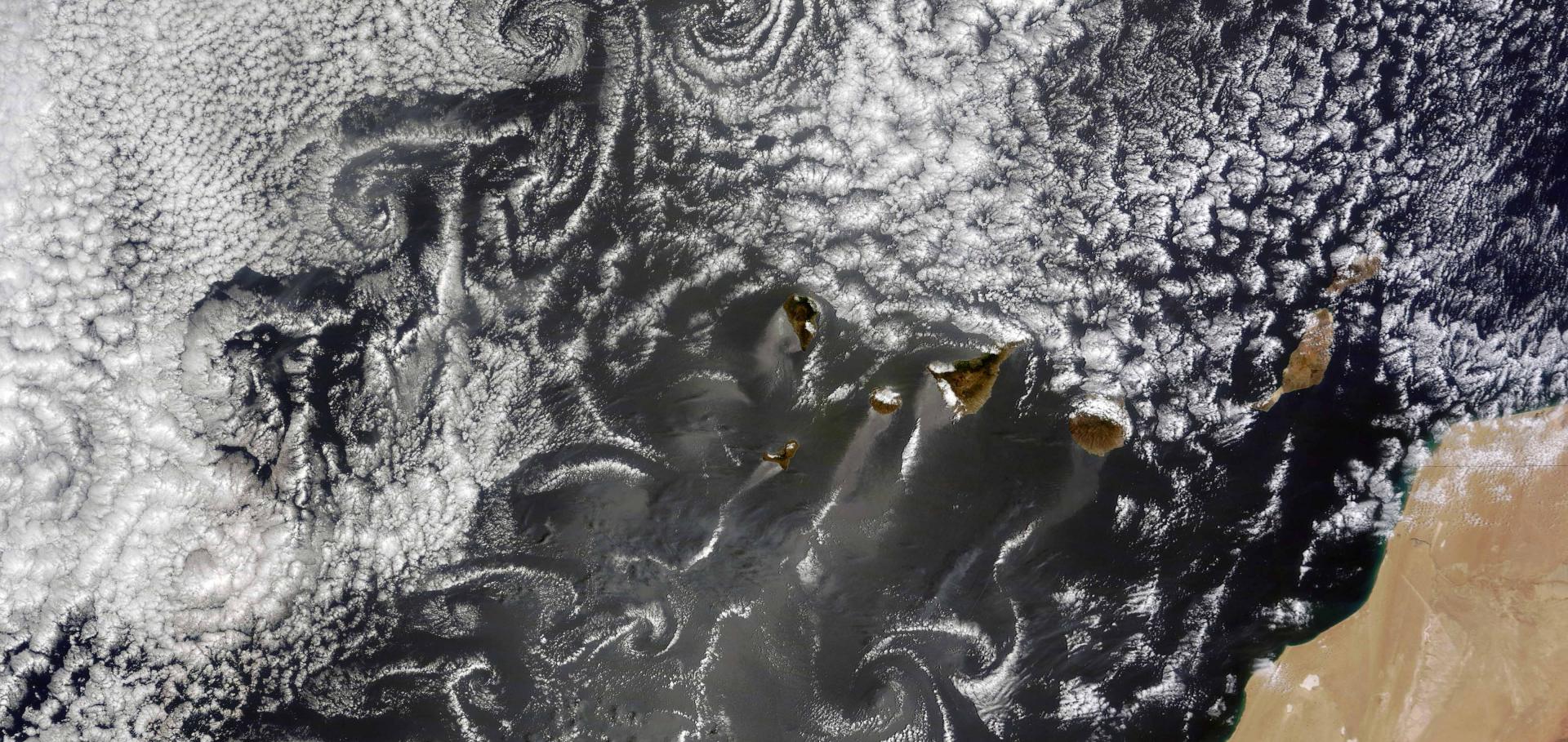Opportunistic experiments to constrain aerosol effective radiative forcing
Atmospheric Chemistry and Physics Copernicus Publications 22:1 (2022) 641-674
Abstract:
Aerosol–cloud interactions (ACIs) are considered to be the most uncertain driver of present-day radiative forcing due to human activities. The nonlinearity of cloud-state changes to aerosol perturbations make it challenging to attribute causality in observed relationships of aerosol radiative forcing. Using correlations to infer causality can be challenging when meteorological variability also drives both aerosol and cloud changes independently. Natural and anthropogenic aerosol perturbations from well-defined sources provide “opportunistic experiments” (also known as natural experiments) to investigate ACI in cases where causality may be more confidently inferred. These perturbations cover a wide range of locations and spatiotemporal scales, including point sources such as volcanic eruptions or industrial sources, plumes from biomass burning or forest fires, and tracks from individual ships or shipping corridors. We review the different experimental conditions and conduct a synthesis of the available satellite datasets and field campaigns to place these opportunistic experiments on a common footing, facilitating new insights and a clearer understanding of key uncertainties in aerosol radiative forcing. Cloud albedo perturbations are strongly sensitive to background meteorological conditions. Strong liquid water path increases due to aerosol perturbations are largely ruled out by averaging across experiments. Opportunistic experiments have significantly improved process-level understanding of ACI, but it remains unclear how reliably the relationships found can be scaled to the global level, thus demonstrating a need for deeper investigation in order to improve assessments of aerosol radiative forcing and climate change.Scalable Sensitivity and Uncertainty Analyses for Causal-Effect Estimates of Continuous-Valued Interventions
Advances in Neural Information Processing Systems 35 (2022)
Abstract:
Estimating the effects of continuous-valued interventions from observational data is a critically important task for climate science, healthcare, and economics. Recent work focuses on designing neural network architectures and regularization functions to allow for scalable estimation of average and individual-level dose-response curves from high-dimensional, large-sample data. Such methodologies assume ignorability (observation of all confounding variables) and positivity (observation of all treatment levels for every covariate value describing a set of units), assumptions problematic in the continuous treatment regime. Scalable sensitivity and uncertainty analyses to understand the ignorance induced in causal estimates when these assumptions are relaxed are less studied. Here, we develop a continuous treatment-effect marginal sensitivity model (CMSM) and derive bounds that agree with the observed data and a researcher-defined level of hidden confounding. We introduce a scalable algorithm and uncertainty-aware deep models to derive and estimate these bounds for high-dimensional, large-sample observational data. We work in concert with climate scientists interested in the climatological impacts of human emissions on cloud properties using satellite observations from the past 15 years. This problem is known to be complicated by many unobserved confounders.Anthropogenic aerosols modulated 20th-century Sahel rainfall variability via their impacts on North Atlantic sea surface temperature
Geophysical Research Letters Wiley 49:1 (2021) e2021GL095629
Abstract:
The Sahel rainfall has a close teleconnection with North Atlantic sea surface temperature (NASST) variability, which has separately been shown to be affected by aerosols. Therefore, changes in regional aerosols emission could potentially drive multidecadal Sahel rainfall variability. Here we combine ensembles of state-of-the-art global climate models (the CESM and CanESM large ensemble simulations and CMIP6 models) with observational data sets to demonstrate that anthropogenic aerosols have significantly impacted 20th-century detrended Sahel rainfall multidecadal variability through modifying NASST. We show that aerosol-induced multidecadal variations of downward solar radiative fluxes over the North Atlantic cause NASST variability during the 20th century, altering the ITCZ position and dynamically linking aerosol effects to Sahel rainfall variability. This process chain is caused by aerosol-induced changes in radiative surface fluxes rather than changes in ocean circulations. CMIP6 models further suggest that aerosol-cloud interactions modulate the inter-model uncertainty of simulated NASST and potentially the Sahel rainfall variability.Model calibration using ESEm v1.1.0 – an open, scalable Earth System Emulator
Geoscientific Model Development Copernicus Publications (2021)
Model calibration using ESEm v1.1.0 – an open, scalable Earth system emulator
Geoscientific Model Development Copernicus GmbH 14:12 (2021) 7659-7672


